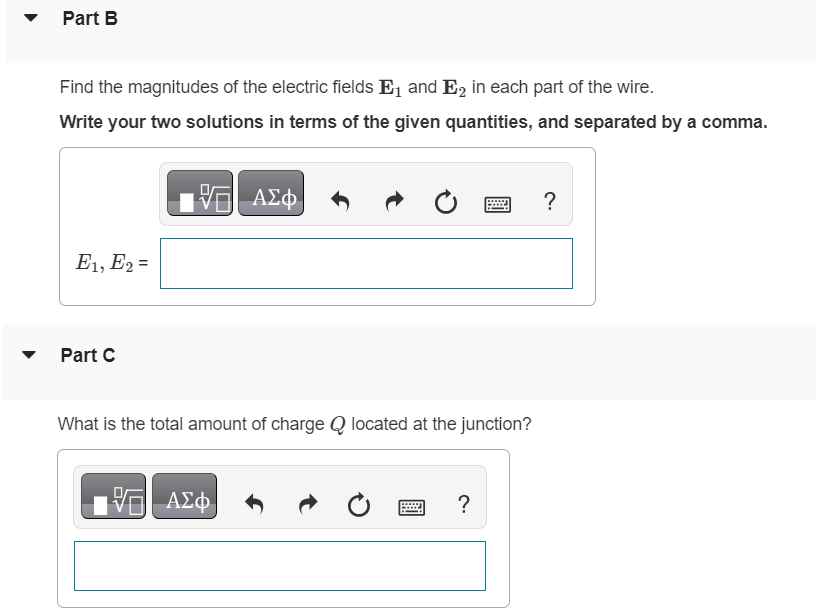Two conducting wires (both of the same radius a, but made of different materials) are joined end-to-end to form a single wire, and a current I flows down them, distributed uniformly across the cross-section. The wires have resistivities ρ1 and ρ2. Part A Find the magnitude of the current density J. Part B Find the magnitudes of the electric fields E1 and E2 in each part of the wire. Write your two solutions in terms of the given quantities, and separated by a comma. E1, E2 = ? Part C What is the total amount of charge Q located at the junction?




You'll get a detailed, step-by-step and expert verified solution.
 Work With Experts to Reach at Correct Answers
Work With Experts to Reach at Correct Answers